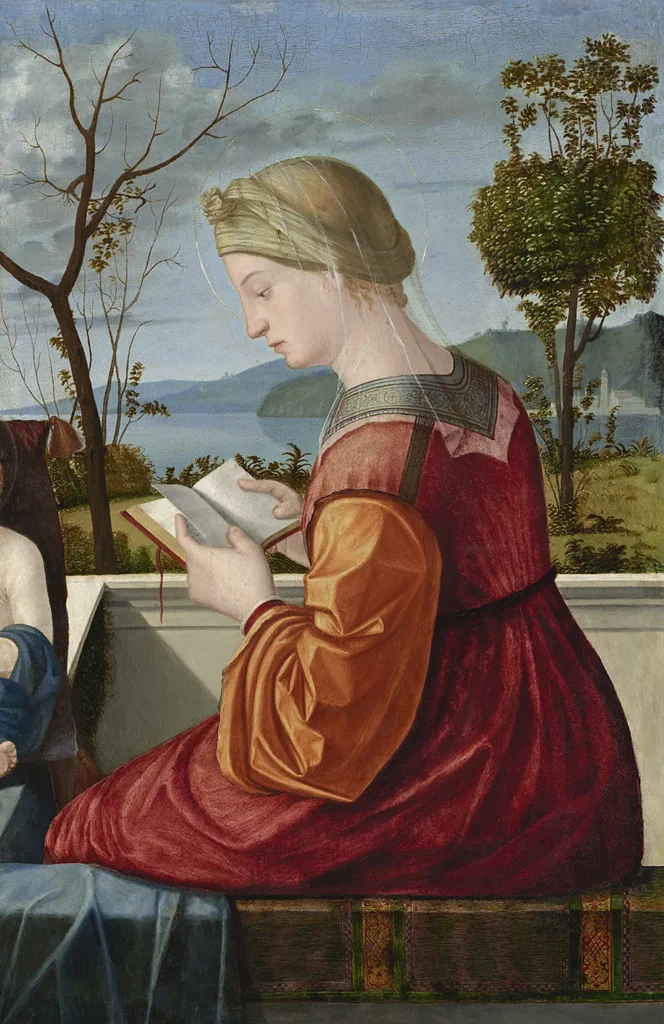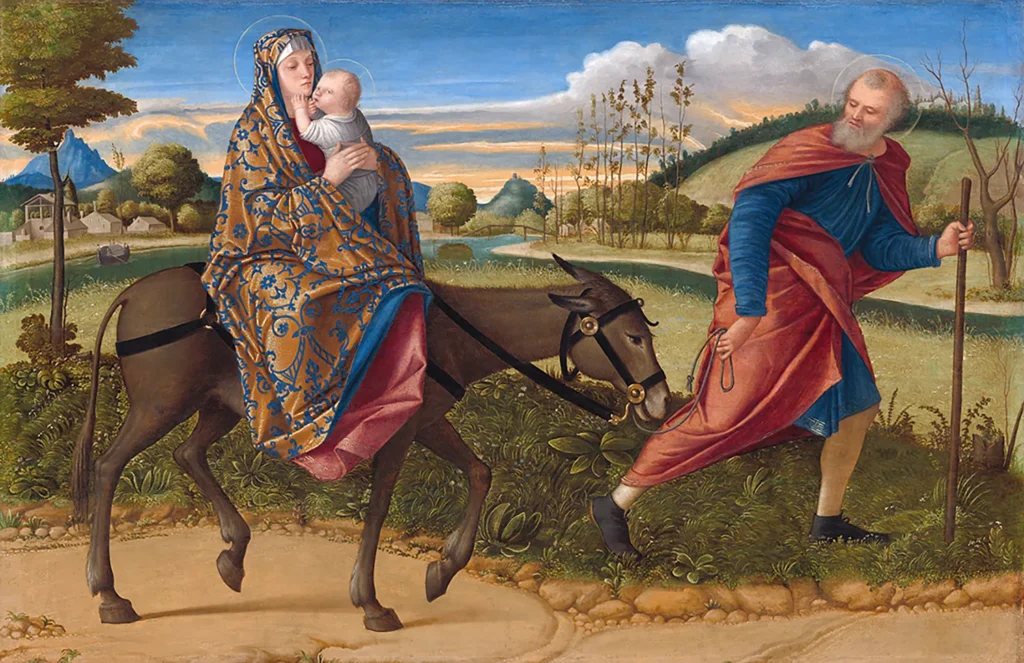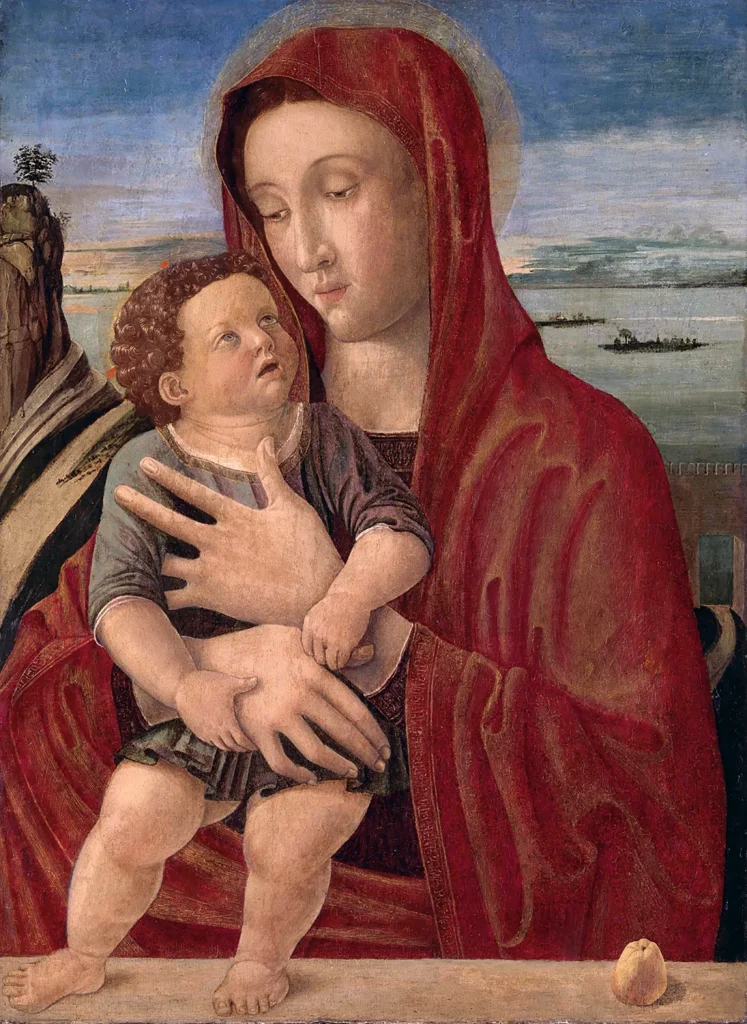A look at the early Venetian Renaissance
“Carpaccio, Bellini und die Frührenaissance in Venedig” sheds light on two artists who were among the most influential figures of a period of cultural and artistic change. With their paintings, Vittore Carpaccio and Giovanni Bellini not only revolutionised the art of their era, but also documented the social and cultural life of the lagoon city around 1500. Their works, which capture the splendour and diversity of Venice, bear witness to a city that played a unique role as a crossroads for trade, politics and art. The combination of technical mastery and narrative depth makes her works valuable testimonies to this dynamic period.

National Gallery of ArtWashington, Collezione Samuel H. Kress
© Genehmigt durch Galleria Nazionale d’Arte, Washington
Carpaccio’s narrative masterpieces
Vittore Carpaccio’s pictorial worlds are characterised by their narrative richness and exceptional attention to detail. His famous Ursula cycle in particular illustrates his ability to harmoniously combine historical and everyday scenes. In his works, Carpaccio combines magnificent architecture with lively figures that reflect the urban life of Venice, integrating influences from distant cultures. This complexity makes his paintings a visual chronicle that unites the past and present of his time. His works are not only documents of an era, but also a window into the world of Venetian society.

National Gallery of ArtWashington, Andrew W. Mellon Collection,
© Authorised by National Gallery of Art, Washington
Bellini’s harmony and innovation
In contrast, Giovanni Bellini focussed on the further development of lighting and composition. His paintings, which often depict religious motifs, are characterised by a special harmony and technical precision. Bellini relied on the innovative use of oil painting, which gave his works an incomparable intensity of colour and spatial depth. At the same time, he combined traditional elements of Byzantine art with modern approaches, which had a lasting influence on later artists such as Giorgione and Titian. Bellini’s art goes beyond aesthetic perfection and demonstrates a deep understanding of symbolic and spiritual content that still touches us today.

© Rijksmuseum Amsterdam
The timelessness of Venetian painting
“Carpaccio, Bellini und die Frührenaissance in Venedig” is more than just a companion volume on art history. It combines analytical depth with a vivid presentation and thus offers an approach to the early Venetian Renaissance that is both historical and timeless. The art-technological and cultural perspectives presented in the texts open up new insights into the work of Carpaccio and Bellini. It becomes clear how relevant their art still is today. The clear organisation of the book and the numerous illustrations makethe book a valuable reference work for anyone interested in the diversity and radiance of Venetian painting.
Data
| Original title | Carpaccio, Bellini und die Frührenaissance in Venedig |
| Translation | Carpaccio, Bellini and the early Renaissance in Venice |
| Editor | Christine Follmann, Annette Hojer, Staatsgalerie Stuttgart |
| Authors | L. Bühl, A. Degler, S. Dietz, A. Ferres, C. Follmann, H. Gräbeldinger, A. Kollmann, C. Krekel, P. Humfrey, A. Hojer, U. Ilg, R. Müller, S. Neuner |
| Publisher | Taschen Verlag |
| Cover | Hardcover |
| Pages | 288 pages, 175 illustrations in colour |
| Language | German |
| Dimensions | 24 x 31 cm |
| ISBN | 978-3-7774-4433-8 |
| Price | 49,90 € |
Further information
Further information on the book “Carpaccio, Bellini and the Early Renaissance in Venice” (DE) (advertising) can be found on the Hirmer Verlag website.







